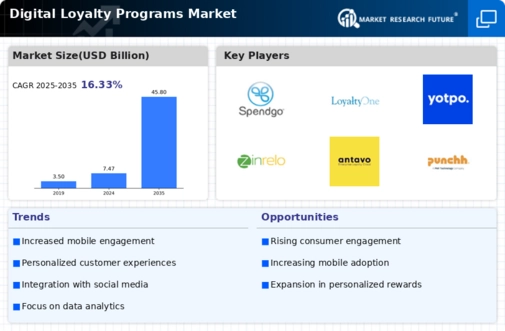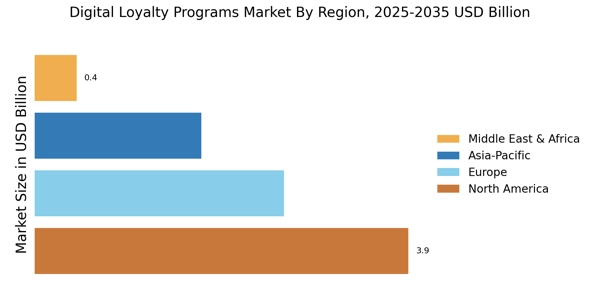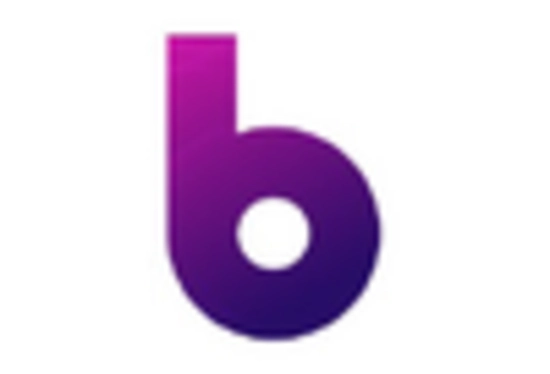Technological Advancements
Technological advancements play a pivotal role in shaping the Digital Loyalty Programs Market. The integration of artificial intelligence and machine learning enables businesses to analyze consumer behavior more effectively, allowing for the development of targeted loyalty initiatives. For instance, predictive analytics can identify trends and preferences, facilitating the creation of personalized offers that enhance customer satisfaction. Furthermore, the rise of mobile applications has streamlined the user experience, making it easier for consumers to engage with loyalty programs. As technology continues to evolve, it is anticipated that the Digital Loyalty Programs Market will further leverage these innovations to optimize customer interactions and drive program effectiveness.
Competitive Market Dynamics
The competitive dynamics within the Digital Loyalty Programs Market are intensifying as more businesses recognize the value of loyalty initiatives. Companies are increasingly differentiating themselves through innovative loyalty offerings, which may include tiered rewards, exclusive access, and personalized experiences. This competitive landscape is driving organizations to continuously refine their loyalty strategies to retain existing customers and attract new ones. Market analysis indicates that businesses with robust loyalty programs can achieve up to 30% higher customer lifetime value compared to those without. As competition escalates, the Digital Loyalty Programs Market is expected to evolve, with companies striving to create unique value propositions that resonate with their target audiences.
Shift Towards Digitalization
The ongoing shift towards digitalization is significantly influencing the Digital Loyalty Programs Market. As consumers increasingly rely on digital platforms for shopping and engagement, businesses are compelled to adapt their loyalty strategies accordingly. Data suggests that over 70% of consumers prefer digital loyalty programs due to their convenience and accessibility. This trend is prompting companies to invest in digital solutions that enhance customer experiences, such as mobile wallets and app-based rewards. Consequently, the Digital Loyalty Programs Market is likely to expand as more businesses recognize the necessity of aligning their loyalty initiatives with the digital preferences of their customers.
Increased Consumer Engagement
The Digital Loyalty Programs Market is witnessing a surge in consumer engagement as brands increasingly recognize the value of fostering long-term relationships with their customers. By implementing loyalty programs, businesses can create personalized experiences that resonate with their target audience. Recent data indicates that companies utilizing digital loyalty strategies have seen a 20% increase in customer retention rates. This heightened engagement not only drives repeat purchases but also encourages word-of-mouth referrals, further amplifying brand visibility. As consumers become more discerning, the ability to offer tailored rewards and incentives is likely to become a critical differentiator in the competitive landscape of the Digital Loyalty Programs Market.
Growing Importance of Customer Data
In the Digital Loyalty Programs Market, the growing importance of customer data cannot be overstated. Businesses are increasingly leveraging data analytics to gain insights into consumer preferences and behaviors, which in turn informs the design of loyalty programs. By understanding customer journeys, companies can tailor their offerings to meet specific needs, thereby enhancing program effectiveness. Recent statistics indicate that organizations utilizing data-driven strategies in their loyalty programs experience a 15% increase in customer satisfaction. As data privacy concerns continue to evolve, the ability to responsibly harness customer information will likely become a key factor in the success of loyalty initiatives within the Digital Loyalty Programs Market.


















Leave a Comment